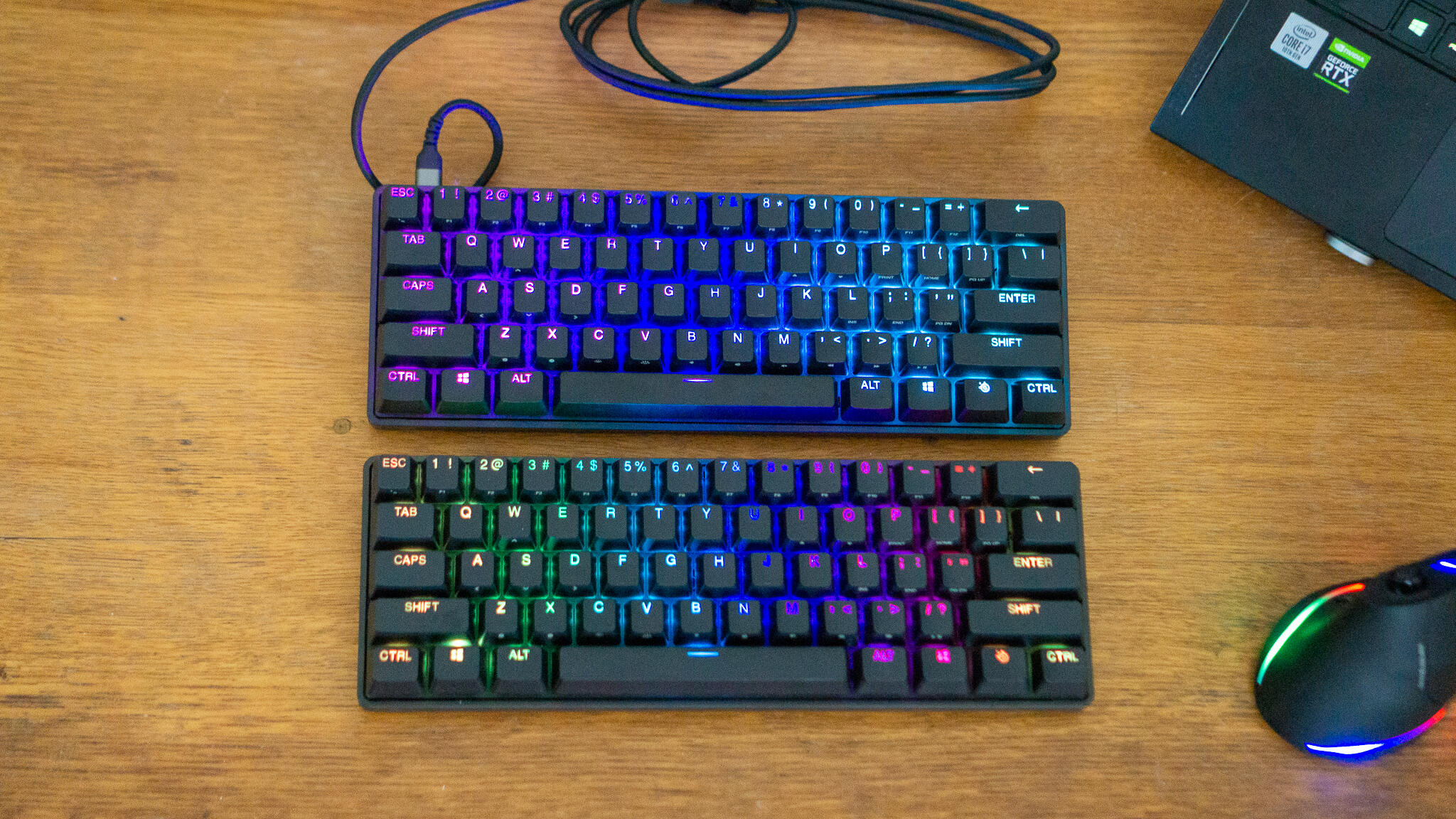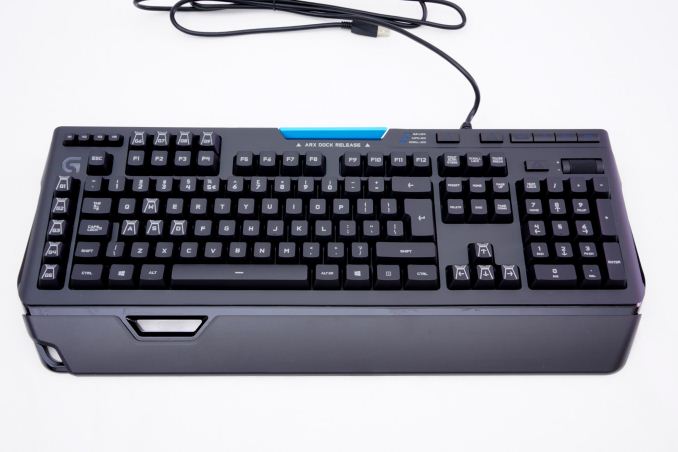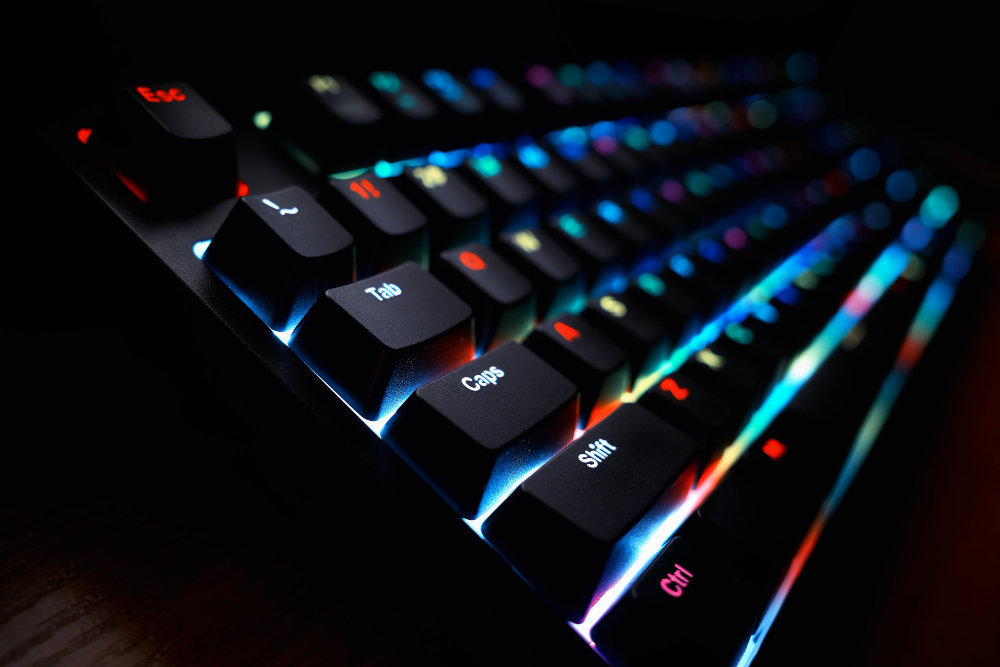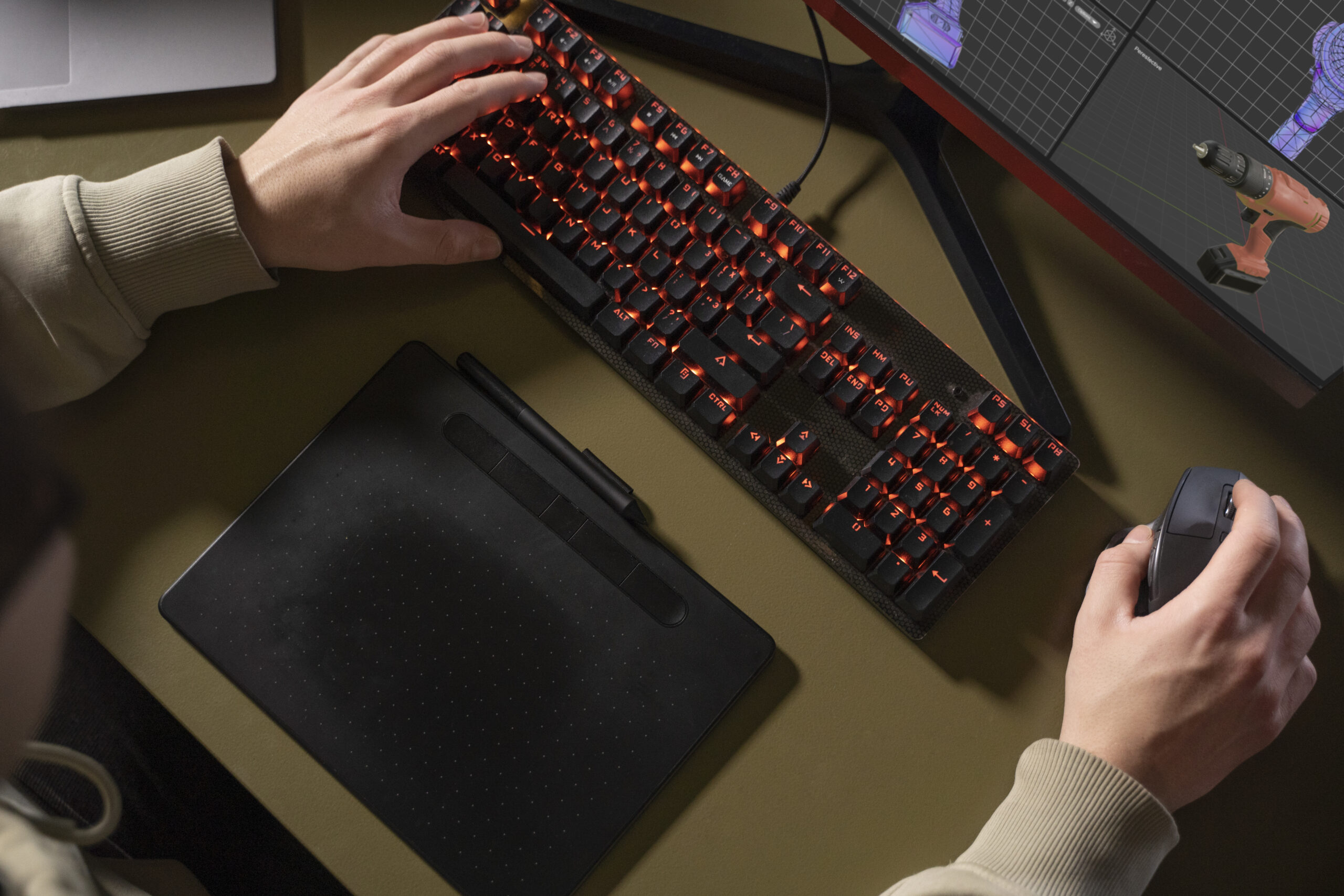Can Gaming Keyboards be used for Work Productivity?
Introduction:
In our ever-connected world, the boundaries between work and leisure have become increasingly fluid. Can Gaming Keyboards be used for work in professional settings, with gaming keyboards standing out as a potential asset? This article delves into the inquiry of whether gaming keyboards can be effectively employed for work purposes and explores the nuances that distinguish them from regular office keyboards.
1. Difference Between a Gaming Keyboard and a Regular Keyboard:
| Aspect | Gaming Keyboards | Regular Office Keyboards |
|---|---|---|
| Aesthetics and Design | Bold and dynamic design | Subdued and utilitarian design |
| Customizable RGB lighting for a visually striking appearance | Designed to blend seamlessly into professional environments | |
| Mechanical vs. Membrane Keyboards | Mechanical switches | Membrane switches |
| Tactile feel and audible click | Quieter keystrokes | |
| Customization Features | Extensive customization options | More straightforward layout |
| Program macros, set up profiles, personalize key functions | Limited customization features | |
| Backlighting and RGB Options | RGB lighting | Backlighting for visibility |
| Vast spectrum of colors | Limited RGB options | |
| May lack extensive RGB features associated with gaming |
2. Are Gaming Keyboards Faster?
a. Key Rollover and Anti-Ghosting:
Gaming keyboards often feature superior key rollover and anti-ghosting capabilities, ensuring that simultaneous key presses are accurately registered. While crucial for gaming, the impact on day-to-day office tasks may not be as pronounced.
b. Actuation Force and Distance:
The actuation force and distance of keys on gaming keyboards are optimized for work and precise input. This can contribute to a perceived increase in typing speed, but the practical implications for office productivity may vary.
c. Response Time:
Gaming keyboards are engineered for minimal response times, catering to the demands of fast-paced gaming environments. While this can be a valuable feature, its significance in typical office tasks may not be as critical.
3. Office Keyboard Buying Guide:
a. Ergonomics and Comfort:
Office keyboards prioritize ergonomic design to enhance comfort during extended use. Considerations such as key spacing, key shape, and wrist support become pivotal in selecting a keyboard conducive to productivity.
b. Durability and Build Quality:
Office keyboards are built with durability in mind, given the continuous use they undergo. Sturdy construction and high-quality materials ensure longevity, a crucial factor in the professional setting.

In quiet office environments, noise generated by keyboard typing can be a concern. Office keyboards typically prioritize quiet operation to maintain a conducive and distraction-free workspace.
d. Connectivity Options:
Connectivity options, such as wired or wireless functionality, are essential considerations for office keyboards. Wireless options provide flexibility, while wired connections ensure a stable and uninterrupted workflow.
e. Special Features for Productivity:
Office keyboards often incorporate features like dedicated media controls, customizable shortcut keys, and integrated touchpads or trackpoints, enhancing overall productivity and user convenience.
4. Switch Color:
a. Explanation of Switch Types:
Different switch colors, such as Cherry MX or Razer, offer distinct tactile feedback and actuation characteristics. Understanding these nuances helps users choose a switch color that aligns with their preferred typing experience.
b. Impact on Typing Experience:
The chosen switch color significantly influences the overall typing experience, affecting factors such as key resistance, audible feedback, and actuation force. Users must carefully consider their preferences to find the ideal switch color for their work needs.
c. Finding the Right Switch Color for Your Work:
Experimenting with different switch colors or consulting reviews and guides can aid users in finding the optimal switch color that strikes a balance between comfort and efficiency for their specific work tasks.
5. Comfort and Usability:
a. Wrist Rests and Keyboard Tilt:
Gaming keyboards often include features like detachable wrist rests and adjustable keyboard tilt for enhanced comfort during extended gaming sessions. Assessing these features is crucial for users looking to maintain ergonomic comfort during prolonged work hours.
b. Keycap Material and Design:
The material and design of keycaps can impact the overall typing feel. While gaming keyboards may prioritize aesthetic keycap designs, office keyboards often focus on practicality and comfort, opting for simple and functional keycaps.
c. Programmable Macros and Shortcut Keys:
The ability to program macros and set up shortcut keys is a common feature in gaming keyboards. While this can be advantageous for gaming enthusiasts, it may also appeal to professionals seeking to streamline repetitive tasks and boost efficiency in their work.
d. Noise Level Considerations:
Gaming keyboards, especially those with mechanical switches, can be louder compared to their membrane counterparts. Assessing noise levels is crucial in office environments to maintain a peaceful and focused workspace.
6. Conclusion:
As we navigate the evolving landscape of technology, the integration of gaming peripherals into professional setups raises pertinent questions about the compatibility of these devices with workplace demands. While gaming keyboards may seem designed for a specific niche, their adaptability and customizable features make them viable options for the modern professional. By understanding the nuances between gaming and office keyboards, users can make informed decisions that enhance their work experience without compromising on productivity and comfort. In the end, the synergy between gaming aesthetics and professional functionality may very well be the key to unlocking a truly personalized and efficient workspace.






